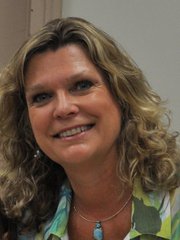Life Purpose, Part 6: Saving the World

Saving the World sounds like a positive Life Purpose. Yet there is something grandiose about presuming to know what is best for the entire world–and in seeing one’s self as the agent for its execution.
 Let’s look at the way well-intended ideas about Life Purpose may be Frankenstein in disguise.
Let’s look at the way well-intended ideas about Life Purpose may be Frankenstein in disguise.
Tanya told me during a session that she wanted to Save the World. (Name changed, with permission.) As a child she fantasized holding a seat as Supreme Court justice, as a sanction to impose order and control.
“What do you want to save the world FROM?” I asked Tanya.
She surprised me by saying, “From ME!!
With tremendous courage, honesty and faith in her own core goodness Tanya saw that Saving the World can be a way to feel superior while seeking to fulfill a young fantasy of living in a totally safe world—one she could control. The small, scared part of her was hiding behind an aggressive part that longed to “get ahead, to dominate and conquer.”
Saving the World does not occur by marching out to impose one’s ego-driven image of justice onto others, scrapping with others in competition for the same bloody honor. Tanya could save her own world by relaxing her compulsion to control, and learning true compassion for herself. Doing this alone contributes to world peace.
If you think in either/or, and you are a competitive perfectionist, you may feel you must either save the world or be worthless and useless. Familiarity with the way our wounds bias our points of view allow us to make intentional life choices instead of living out unconscious dramas on the stage of life. If you take on a large role, it is for more fulfilling reasons.
A drive to save the world may be about leaving your mark, like carving initials in a tree or gouging them in stone. The urge to cry I exist, globally, can spring from fear of death. It is like the urge to combat mortality by having children. Wanting to prove how special you are to the world can be like trying to fill a black hole.
These urges are not wrong. Desire does drive us, and creates the dramas of life, the lovely ones included. Living with Purpose is about experiencing a sense of meaning and making intentional choices.
In the world of energy, motivation is everything. Motivation establishes the resonance of our acts and their ultimate effect. If we are thinking big and plan to impact others, the nature of our influence determines whether or not we actually serve the world. If the drive to save the world comes from inspiration your actions may be a boon to mankind. If that drive emerges from unacknowledged inner wounds it creates havoc.
Take, for example, a nurse or doctor in a psych ward, whose need for control, approval, or glory casts them into competition with their team or those under their care. Their service is compromised. On the other end of the spectrum someone with ‘a meaningless job’ can be a light in the world by performing service with loving kindness.
casts them into competition with their team or those under their care. Their service is compromised. On the other end of the spectrum someone with ‘a meaningless job’ can be a light in the world by performing service with loving kindness.
A wise friend (Evelyn Roberts) said: “Today’s freedom fighters are tomorrow’s tyrants.”
Ego drive intense enough to presume one’s personal will onto the world may be epic–but is it service or merely drama? Does it play out Life Purpose or merely create karma?
A strident man strode into a spiritual center, talking about saving the world before it was too late. The perceptive fellow who received him asked: “What part of the world are you interested in saving? If it is yourself that you are trying to save, we can help you.”
We are possessed of a whole range of different motivations and inclinations. Finding and following our most beautiful and uplifting motivations is a true route to meaning and purpose in life. Bringing forth the parts of us that want to create something that really matters is an art. There is purpose and beauty in energizing those aims and goals with life breath.
Do you want to Save the World, or are you struggling to save yourself through external acts?
Does the world want to be saved?
How will the world respond if you attempt to save it?
Who do you feel a need to be seen or recognized by?
What do you need people to do or say in recognition of your deeds?
Are you absolutely certain that you will feel better, happier or more worthwhile if you accomplish large goals?


























